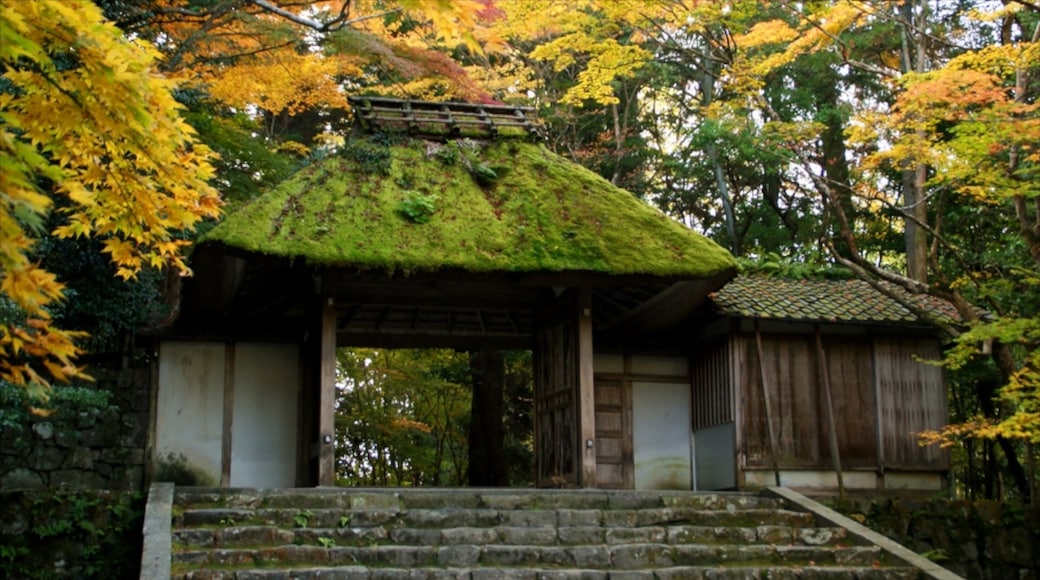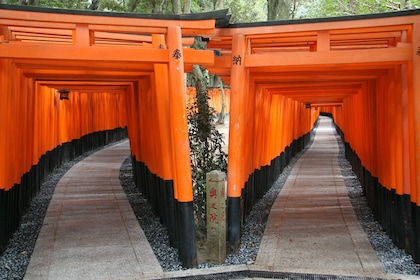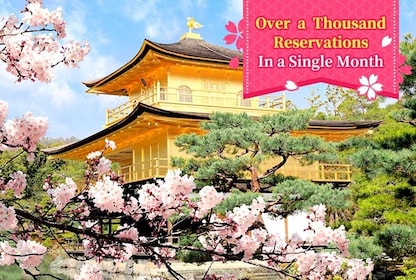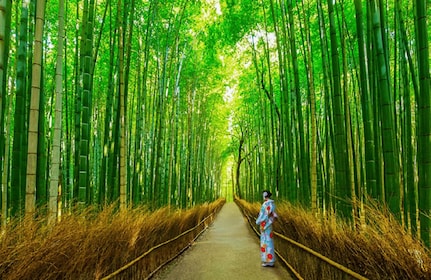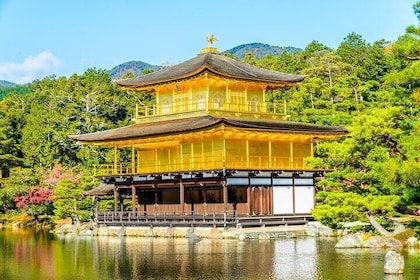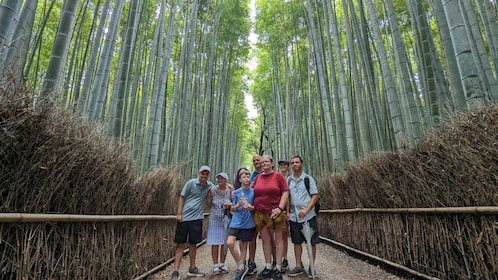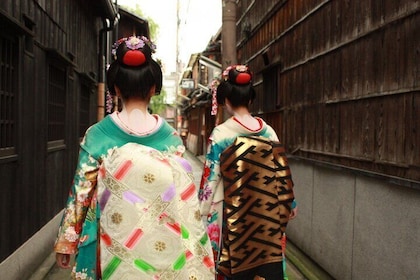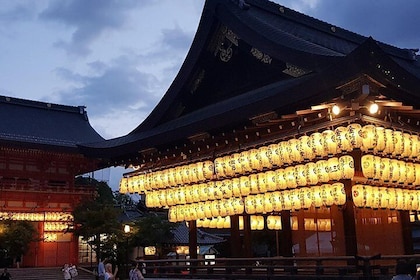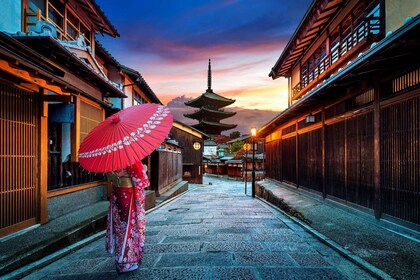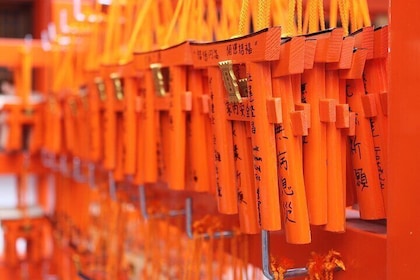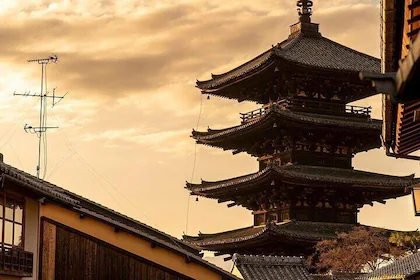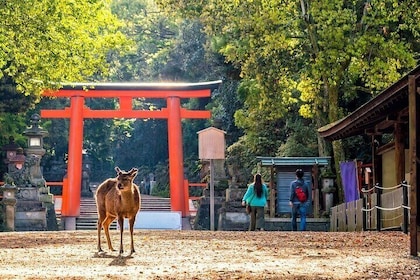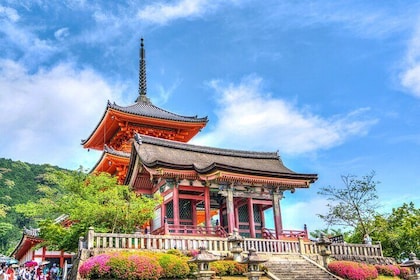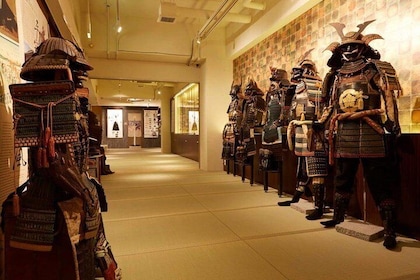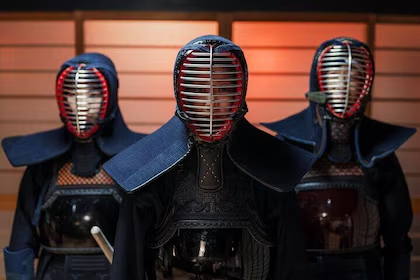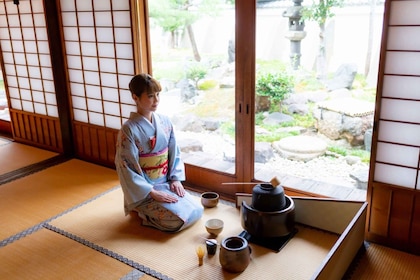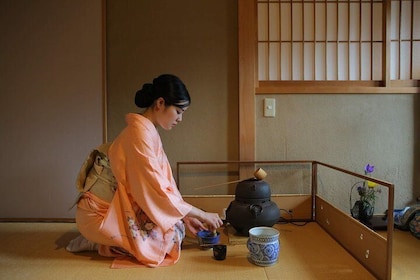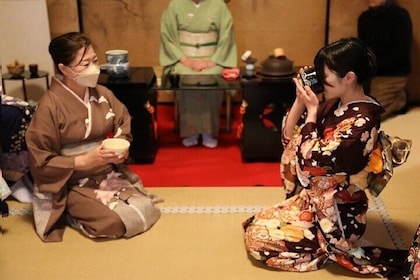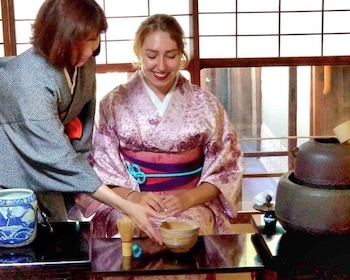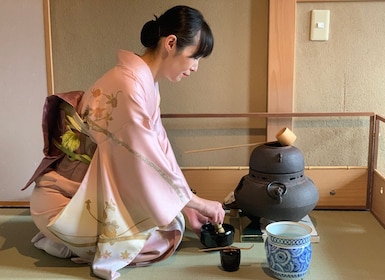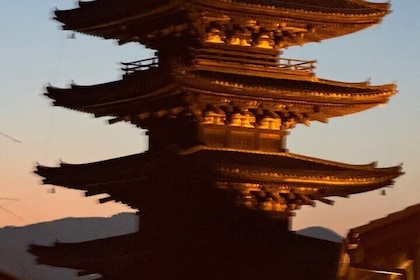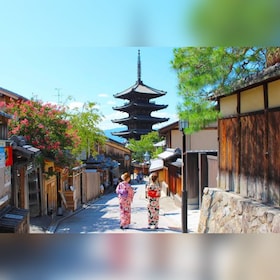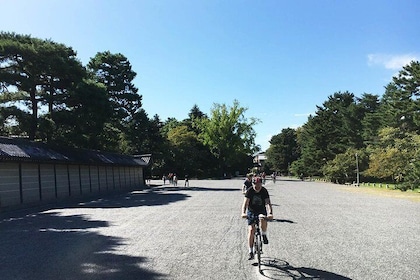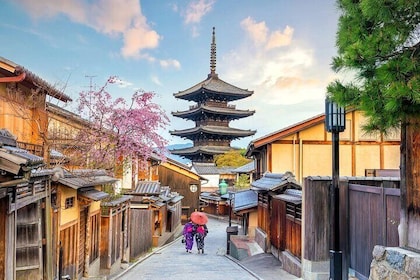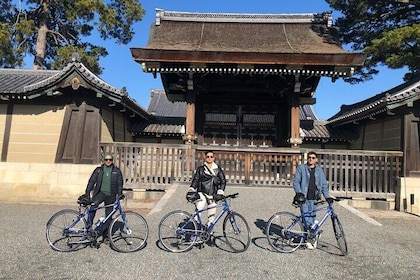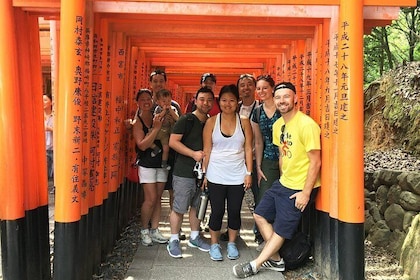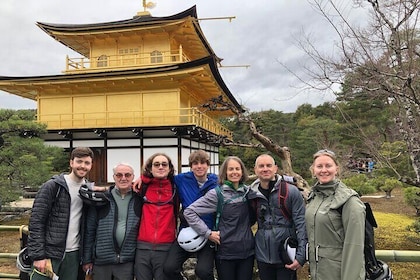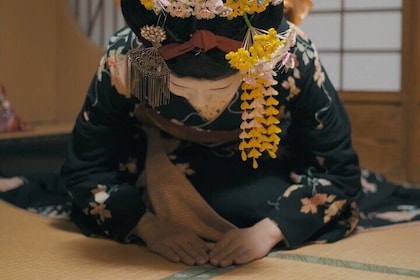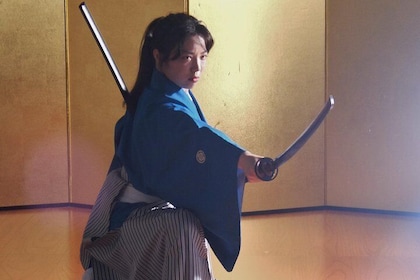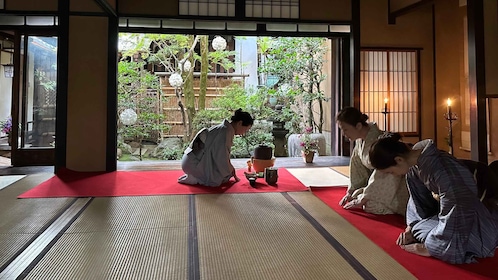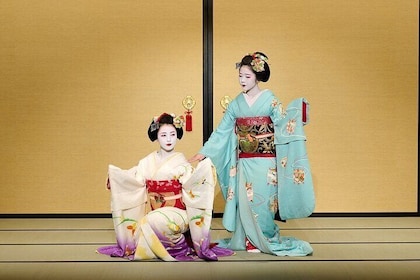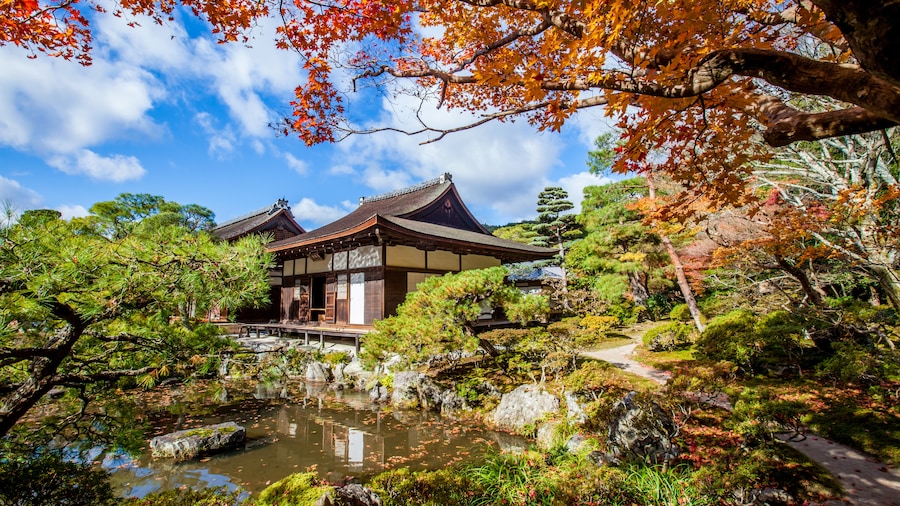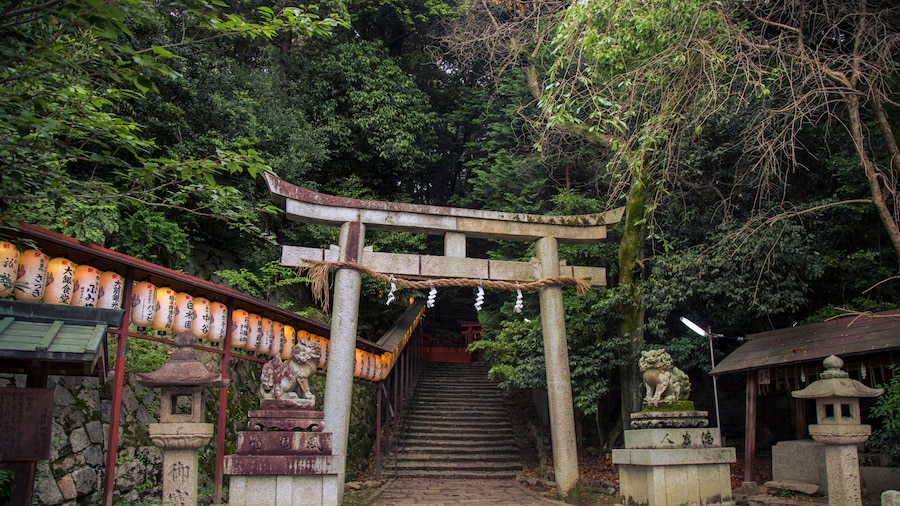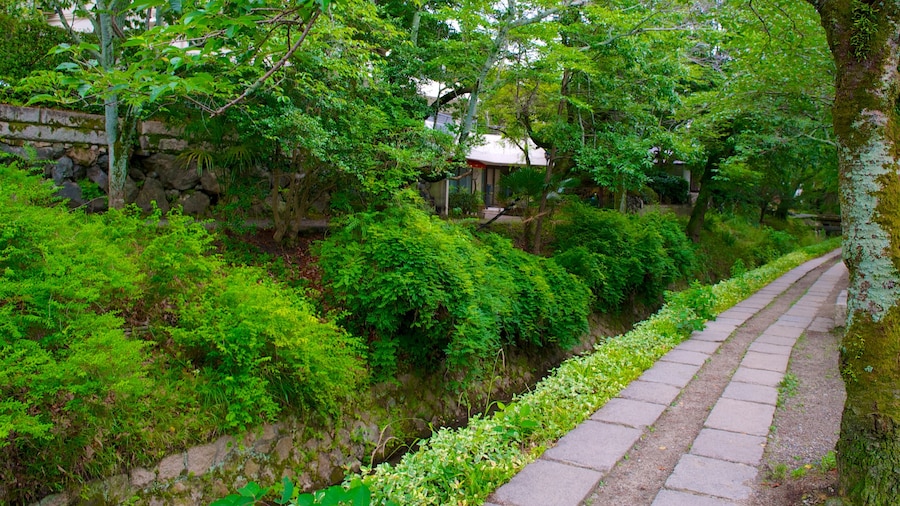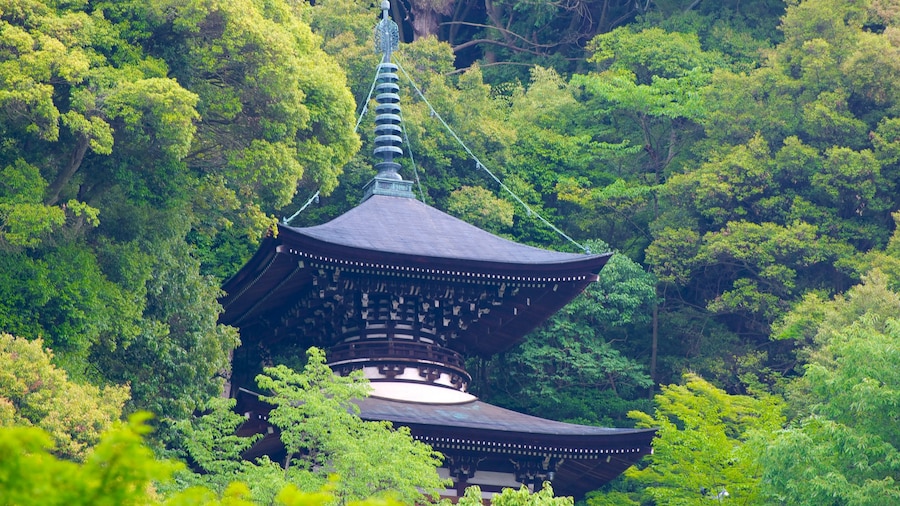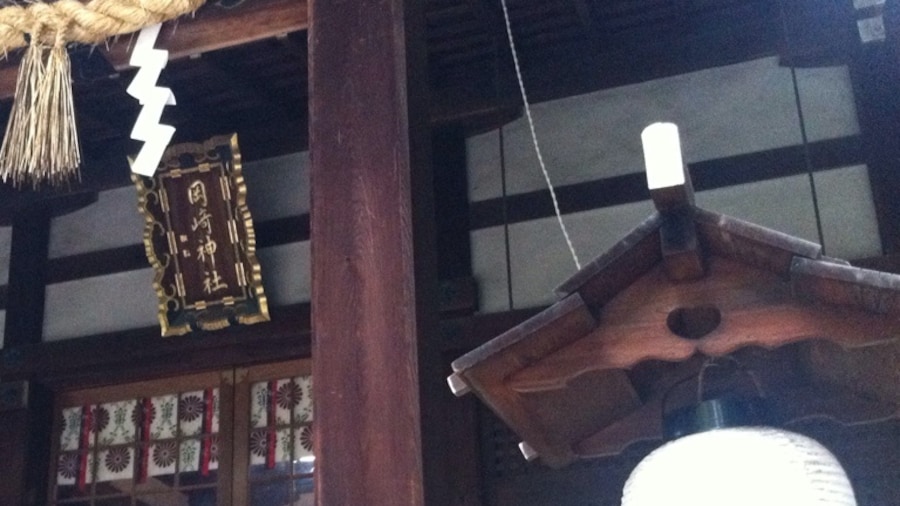The focus at the Honen-in Temple is on a tranquil and serene atmosphere rather than aesthetic beauty. It must be said, however, that its gates are stunning in fall amid multicolored leaf displays. Honen-in is known not only for its serenity, but also for exhibitions and concerts. Despite Kyoto’s well-known heat waves, the complex is cool and comfortable due to woodland shelter.
Visit the Hojo building to admire the Shoheki-ga paintings, which date back to the 16th century. Tread the steps to Somon Gate among the greenery of the woods. The entrance is particularly picturesque in fall, with a vibrant spectrum of autumnal colours. Admire the water spring, Zenki-sui, in the garden. The legend goes that the priest Nincho speared the ground, causing water to spurt eternally.
Take in the changing patterns in the mounds of sand either side of the entrance path. These represent the body and the soul. See displays and concerts in the Lecture Hall. Remove your shoes to enter the main hall. If you are lucky, there will be an interesting lecture taking place. Admire the wooden statues. Check out the innovative Shishiodoshi device to scare away intruding deer: a hollow bamboo pole fills with water and hits the ground with a warning thud every couple of minutes. Several important Japanese persons are buried in the graveyard at the south entrance.
The complex is open to visitors year-round from early morning until afternoon, but some of the buildings can only be seen for a couple of weeks annually, in April and November. There is a charge for entry. The complex was part of the Jodo-shu sect of Buddhism, which was considered evil by purist Buddhists. Now the temple is independent.
The Honen-in Temple is situated in the Higashiyama region in the northeast of Kyoto. It is near the Ginkaku-ji Temple and a pleasant stone trail called the Philosopher’s Walk. Take a Kyoto City Bus toward Iwakura to Jodo-ji, which is a short walk from the shrine. Minamida bus stop is also close. Buses go there from Shijō Kawaramachi.
